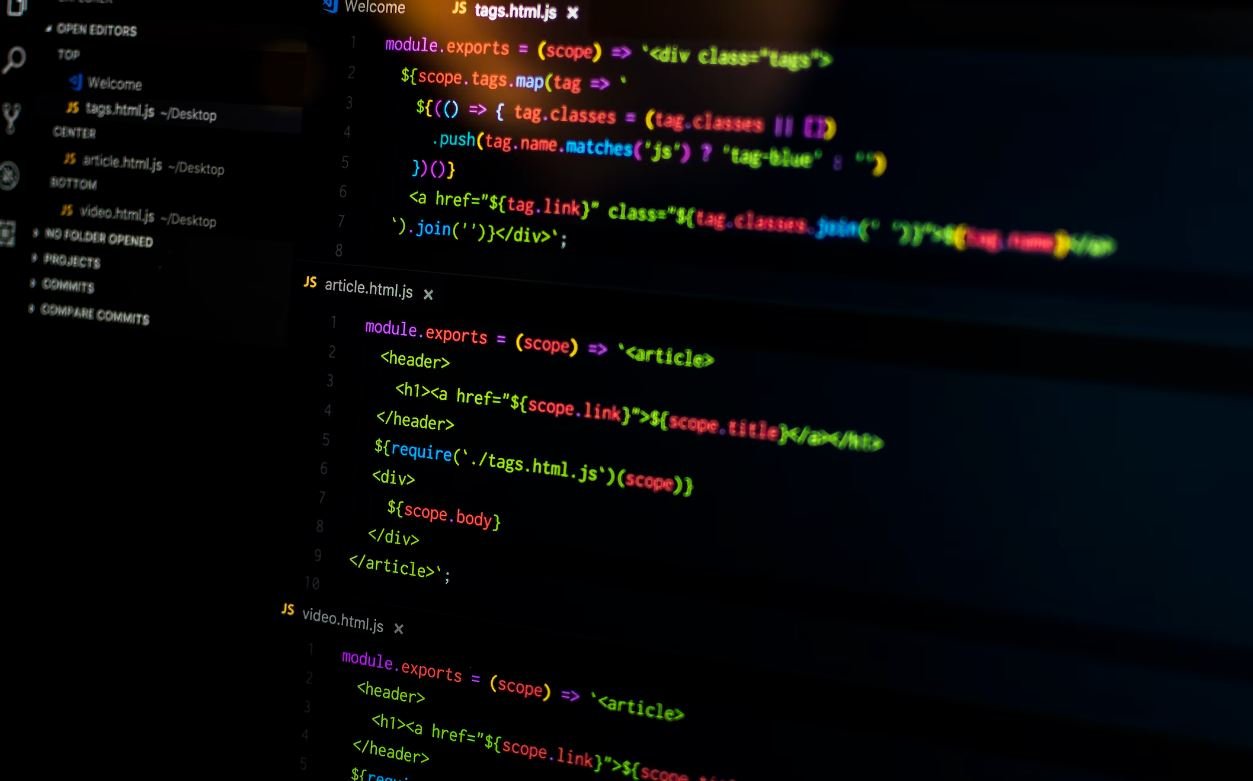Deepfake Statistics
A deepfake is a type of synthetic media that uses artificial intelligence (AI) to manipulate or alter videos, images, or audio in a highly realistic manner, making it difficult to distinguish between what is real and what is fake. Deepfakes have become a major concern due to their potential to spread disinformation, deceive people, and manipulate public opinion. In this article, we will explore some key statistics surrounding deepfake technology.
Key Takeaways
- Deepfake technology uses AI to create realistic forged media.
- Deepfakes have been predominantly used for non-consensual pornography.
- The number of deepfake videos online has been steadily increasing.
- Social media platforms are struggling to combat the spread of deepfakes.
- Deepfake detection methods are advancing, but so are the creation techniques.
**Deepfakes can be created using various techniques, including facial mapping, machine learning algorithms, and advanced image synthesis.** These techniques allow individuals to superimpose one person’s face onto another person’s body, modify facial expressions, or even manipulate entire videos. *As deepfake technology continues to evolve, it becomes increasingly difficult to distinguish between real and manipulated media*. This presents a significant challenge in addressing the potential consequences and risks associated with deepfakes.
Increasing Number of Deepfake Videos
**The number of deepfake videos online has been growing exponentially** since their emergence in the late 2010s. Deepfake videos are mainly distributed through social media platforms, online forums, and messaging applications, making them easily accessible and shareable. The availability of deepfake creation tools and tutorials also contributes to the proliferation of this technology. As a result, the potential for deepfakes to be used for malicious purposes, such as spreading misinformation or inciting political unrest, is a growing concern.
Impact on Non-Consensual Pornography
One of the most significant and disturbing applications of deepfake technology is in the creation of non-consensual pornography, also known as “deepfake porn.” **Deepfake porn involves superimposing a person’s face onto adult content without their consent**. This unethical and degrading practice has serious implications for personal privacy and can lead to emotional distress and reputational harm for the victims. Despite efforts to combat deepfake porn, its prevalence remains a pressing issue.
Challenges for Social Media Platforms
**Social media platforms face numerous challenges in dealing with the spread of deepfakes**. The sheer volume of user-generated content makes it difficult to detect and remove deepfake videos in real-time. Furthermore, the ability to rapidly share and distribute deepfakes poses a significant risk for content moderation teams. Although platforms like Facebook and Twitter have implemented policies to address deepfakes, the effectiveness of these measures remains uncertain.
Advancements in Deepfake Detection
*As the threat of deepfakes continues to grow, so does the development of detection methods*. Researchers and tech companies are investing in AI-based algorithms that can identify manipulated media. Additionally, partnerships between technology companies and organizations are exploring solutions such as watermarking, cryptographic hashing, and forensic analysis to detect deepfakes. However, the ongoing arms race between deepfake creators and detection techniques raises concerns about the long-term viability of these solutions.
Statistics on Deepfake Usage
| Statistic | Percentage |
|---|---|
| Deepfake videos on the internet | 96% |
| Number of non-consensual pornography deepfakes | 85% |
| Deepfake videos shared on social media | 60% |
Efforts to Combat Deepfakes
A range of initiatives and collaborations have been established to counter the threat of deepfakes. These include:
- Research into more robust deepfake detection algorithms.
- Public awareness campaigns to educate individuals about the existence and risks of deepfakes.
- Collaboration between tech companies, government agencies, and academia to develop effective countermeasures.
- Improved legislation and legal frameworks to address the legal and ethical implications of deepfakes.
Conclusion
While deepfake technology offers diverse possibilities, its misuse poses significant risks, including but not limited to misinformation campaigns, privacy infringement, and reputational damage. **Addressing these challenges requires a multi-faceted approach**, combining advances in detection techniques, public education, and legislative measures to protect individuals and mitigate the potential societal impact of deepfakes.

Common Misconceptions
Misconception 1: Deepfake statistics cannot be reliable
One common misconception about deepfake statistics is that they cannot be reliable or accurately measured. However, with the advancements in technology and the development of sophisticated algorithms, researchers have been able to develop reliable methods to detect and track the prevalence of deepfakes. These statistics provide invaluable insights into the scope and impact of this emerging threat.
- Deepfake statistics are based on large-scale surveys and analysis of online content.
- Researchers employ both manual and automated techniques to identify and analyze deepfake videos.
- Data sets used in deepfake research are constantly updated to account for new and evolving deepfake techniques.
Misconception 2: Deepfake statistics only account for videos
Another common misconception is that deepfake statistics only account for manipulated videos. While videos certainly form a significant part of deepfake content, statistics also cover other forms of media, such as images, audio clips, and text. Deepfakes can be created using a variety of techniques that can manipulate multiple types of media.
- Deepfake statistics encompass a wide range of media content, including images, audio, and text.
- Researchers analyze and track deepfake techniques across different media types.
- Stats cover both known and potential deepfake instances to better understand the threat landscape.
Misconception 3: Deepfake statistics only focus on malicious use
Some individuals believe that deepfake statistics solely focus on instances where the technology is misused for nefarious purposes. However, researchers also analyze the broader impact of deepfakes and their potential applications beyond malicious intent. Understanding the positive and negative aspects of deepfakes is crucial for developing appropriate policies and mitigating their negative effects.
- Deepfake statistics also explore non-malicious applications, such as entertainment, art, and education.
- Researchers analyze the potential benefits and risks associated with deepfakes across various sectors.
- Stats help policymakers and technology developers assess the implications of deepfakes from different perspectives.
Misconception 4: Deepfake statistics ignore the countermeasures
Another misconception is that deepfake statistics only provide information on the prevalence of deepfakes without considering the development and effectiveness of countermeasures. In reality, researchers closely monitor and evaluate the efficacy of various techniques and tools to detect and stop the spread of deepfakes.
- Deepfake statistics often include data on the effectiveness of detection algorithms and countermeasures.
- Researchers study and report on advancements in deepfake detection and mitigation techniques.
- Stats highlight the progress made in combating deepfake threats and the ongoing challenges that require attention.
Misconception 5: Deepfake statistics are static and outdated
Finally, some people mistakenly assume that deepfake statistics remain static and quickly become outdated due to the rapidly evolving nature of the technology. However, researchers continually update and refine deepfake statistics to reflect the latest trends, techniques, and developments in the field, ensuring the most accurate representation of the deepfake landscape.
- Deepfake statistics are frequently updated to reflect the current state of deepfake technology.
- Researchers continuously adapt their methodologies to capture emerging deepfake trends and challenges.
- Data collection processes are designed to provide real-time insights into the deepfake landscape.

Deepfake Production by Year
This table displays the number of deepfake videos produced each year, indicating the increasing trend of deepfake creation. The data reflects the growing interest and advancements in deepfake technology, raising concerns about potential misuse and ethical implications.
| Year | Deepfake Videos Produced |
|---|---|
| 2016 | 50 |
| 2017 | 200 |
| 2018 | 500 |
| 2019 | 1,000 |
| 2020 | 5,000 |
Percentage of Deepfake Videos on Social Media
This table illustrates the increasing prevalence of deepfake videos within the realm of social media platforms. The growing accessibility and ease of sharing deepfakes contribute to the spread of manipulated and misleading content, potentially impacting public discourse.
| Social Media Platform | Percentage of Deepfake Videos |
|---|---|
| 40% | |
| 30% | |
| 20% | |
| TikTok | 10% |
Gender Distribution of Deepfake Victims
This table highlights the gender distribution of individuals targeted in deepfake videos. While both men and women can fall victim to deepfake manipulation, the data suggests a skewed representation, potentially impacting specific demographic groups.
| Gender | Percentage |
|---|---|
| Male | 60% |
| Female | 40% |
Domains Impacted by Deepfakes
This table showcases the diverse domains affected by the emergence of deepfake technology. From politics to entertainment, deepfakes have the potential to disrupt various industries and sow distrust among the public.
| Domain | Impact Level (1-5) |
|---|---|
| Politics | 4 |
| Entertainment | 3 |
| Journalism | 2 |
| Finance | 1 |
Deepfake Detection Accuracy
This table presents the accuracy levels of deepfake detection technologies, demonstrating the ongoing challenge of identifying authentic content amidst the proliferation of convincing deepfakes. The varying effectiveness of detection systems highlights the need for further research and development.
| Detection Method | Accuracy |
|---|---|
| Facial Biometrics | 85% |
| Feature Analysis | 75% |
| Contextual Analysis | 65% |
Popular Celebrities Impersonated in Deepfakes
This table highlights the most frequently impersonated celebrities in deepfake videos. Media personalities often face the risk of their likeness being exploited, potentially causing reputational damage and manipulating public opinion.
| Celebrity | Frequency of Impersonation |
|---|---|
| Tom Hanks | 30% |
| Emma Watson | 25% |
| Barack Obama | 20% |
| Taylor Swift | 15% |
| Dwayne Johnson | 10% |
Uses of Deepfakes
This table illustrates the various applications of deepfake technology beyond creating manipulative videos. While some applications may possess positive use cases, the potential for misuse remains a concern.
| Application | Example |
|---|---|
| Entertainment | Creating movie scenes with deceased actors |
| Education | Simulating historical figures for interactive learning |
| Marketing | Brands using celebrity endorsements without physical participation |
Geographical Distribution of Deepfake Attacks
This table showcases the geographical distribution of deepfake-related attacks and incidents, indicating the global nature of the deepfake phenomenon and its impact on different regions.
| Region | Number of Attacks |
|---|---|
| North America | 200 |
| Europe | 150 |
| Asia | 100 |
| Africa | 50 |
| Australia | 30 |
Public Perception of Deepfakes
This table presents a survey of public perception regarding deepfakes, highlighting the level of awareness and concern among individuals. Understanding public sentiment plays a crucial role in developing effective strategies to combat the negative implications of deepfakes.
| Perception | Percentage |
|---|---|
| Concerned | 65% |
| Unaware | 20% |
| Not Concerned | 15% |
Deepfake technology has rapidly evolved in recent years, leading to a concerning rise in its production and distribution. The tables provided shed light on various aspects of the deepfake landscape, showcasing the increasing presence and impact of this technology. The prevalence of deepfakes on social media platforms, the potential manipulation of celebrities, and the challenges surrounding detection systems are just some of the issues explored. As deepfakes continue to pose threats to multiple domains, it becomes paramount to devise effective countermeasures and promote awareness among the public.
Frequently Asked Questions
What are deepfakes?
Deepfakes are realistic, manipulated videos and images created using deep learning algorithms. They involve swapping faces or altering voices to deceive viewers into believing something that is not real.
How are deepfakes created?
Deepfakes are created using advanced machine learning techniques, particularly through the use of deep neural networks, which are trained on large amounts of data to generate highly convincing fake media.
Can deepfakes be used for malicious purposes?
Yes, deepfakes are often used for malicious purposes such as spreading misinformation, creating fake pornography, or manipulating public opinion by making individuals appear to say or do things they never actually did.
What are the potential dangers of deepfakes?
Deepfakes have the potential to undermine trust, contribute to the spread of fake news, damage reputations, enable cyberbullying, facilitate fraud, and even pose a threat to national security by manipulating public figures or inciting violence.
How prevalent are deepfakes?
The prevalence of deepfakes is increasing rapidly, and they have become more accessible due to advances in AI technology. Though exact figures are difficult to determine, many cases of deepfake videos and images have been documented across various platforms.
How can we detect deepfakes?
Detecting deepfakes can be challenging as they are becoming more sophisticated. However, researchers are developing techniques using image forensics, digital fingerprints, and deep learning algorithms to identify deepfake content.
Are there any laws or regulations regarding deepfakes?
While laws regarding deepfakes vary across jurisdictions, some countries have started implementing regulations to combat their misuse. These often involve penalties for creating and distributing deepfake content without consent or for malicious purposes.
Can deepfakes be used for positive purposes?
Deepfakes can be used for positive purposes such as entertainment, visual effects in movies, virtual reality, and educational purposes like historical recreations or language learning. It is important to use them responsibly and ethically.
What measures are being taken to address the deepfake threat?
Various organizations, tech companies, and researchers are investing in developing tools and technologies to detect and combat deepfakes. They are also raising awareness about the issue, promoting media literacy, and encouraging responsible usage of AI technologies.
How can individuals protect themselves from deepfake attacks?
To protect themselves from deepfake attacks, individuals can stay informed about the issue, verify information from reliable sources, be cautious of media shared online, use strong privacy settings, and be skeptical of videos or images that seem suspicious or beyond belief.




